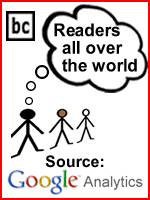It has been not quite
a century since Mohandas Karamchand Gandhi was assassinated
in January, 1948 at the age of 78 in New Delhi, India,
and the bevy of hagiographies on him are now being replaced
with truth-telling biographies on the Gandhi nobody knew.
 The
most recent one is titled, “Great
Soul: Mahatma Gandhi and His Struggle with India”
by Joseph Lelyveld.
The
most recent one is titled, “Great
Soul: Mahatma Gandhi and His Struggle with India”
by Joseph Lelyveld.
According to Lelyvard,
Gandhi, the pacifist, was a wife-beater, denied sex to
his wife for decades, was purported to be a “celibate,”
living life as an ascetic, but actually was a pedophile
who ritualized sleeping naked with underage girls in order
to test “the ferocity of his sexual desires,” and at one
point left his wife for a male lover.
While
one would think, at first glance, reading Lelyveld’s shocking
revelations about Gandhi, it’s all tabloid fodder for
a rapacious audience that diets on sordid tales,
Lelyveld, former executive editor of the New York Times,
and a Pulitzer Prize-winning journalist and author, pays
meticulous attention to details.
Between 1908 and 1910,
Gandhi left his wife to be with a wealthy German-Jewish
bodybuilder and architect, Hermann Kallenbach. But the
only evidence Lelyvard gives the reader, suggesting the
bonding of the two men was at least homoerotic if not
homosexual, is a salacious one-liner where Gandhi allegedly
told Kallenback, “How completely you have taken possession
of my body. This is slavery with a vengeance.” According
to Gandhi’s own wife, Gandhi engaged in heterosexual intercourse,
but it repulsed him so much it actually made him physically
ill, avowing never to attempt it again.
While
Gandhi may have been repulsed by heterosexuality he seems
to be repulsed, at least publicly, by homosexuality, too.
For example, in the 1930s both Gandhi and Jawaharlal Nehru
attempted to erase all traces of the Indian homoerotic
tradition from Indian temples as a result of their systematic
campaigns of “sexual cleansing.”
The revelation in
Lelyveld’s book of Gandhi’s alleged bisexuality is the
only positive news in a long laundry list of sexual peccadillos,
bizarre personal habits, like his love for enemas, and
done twice a day, mind-bending cult practices like “spiritual
marriages” with women where sex is purportedly absent,
and his unbelievable blatant racists attitudes towards
black South Africans.

How did the public
get so hoodwinked by the divinity of Gandhi?
The
deification of Gandhi intentionally eclipsed Gandhi, the
real man. Elevated to a 20th Century messiah by both European
and American Christian clerics and missionaries, who wanted
to convert Hindus to Christianity, and elevated to a 20th
Century Hindu god by Indians, Gandhi’s real life was overlooked
and supplanted with a series religious myths. For example,
John H. Holmes, a Unitarian pastor from New York, praised
Gandhi in his writings and sermons with titles like: Gandhi:
The Modern Christ, and Mahatma Gandhi: The Greatest Man
Since Jesus Christ, and Krishnalal Shridharni announced
that Gandhi was “The seventh reincarnation of Vishnu,
Lord Rama.”
Known the world over
as Mahatma Gandhi, Sanskrit
for “Great Soul,” and as Bapu, Gujarati
for “Father,”
Gandhi comes to my conscious from the father of this country’s
Civil Rights Movement of the 1960s, who, too, was assassinated,
Rev. Dr. Martin Luther King, Jr. I loved Gandhi because
King did.
Gandhi’s pacifist
philosophy of “satyagraha,” a Sanskrit term he coined
to mean the resistance to oppression through mass civil
disobedience firmly rooted in “ahimsa“
or absolute non-violence
that transforms foes into friends, won India its independence from British colonialism
in 1947. Gandhi’s liberation paradigm profoundly informed
the socio-political theology of the Civil Rights Movement
of the 1960s, giving rise to a black non-violent movement
consisting of sit-ins, freedom rides, and marches that
shamefully exposed and eventually toppled the South’s
Jim Crow ordinances.
 As
with King, Gandhi, too, became an iconic image in The
Movement. However, if King and others knew of Gandhi’s
racist views of black South Africans, and knew why Gandhi
never met with African Americans civil rights leaders,
who were hungry to not only meet the man but to know more
about his philosophy of “satyagraha,” Gandhi wouldn’t
have been so highly profiled in his public sermons.
As
with King, Gandhi, too, became an iconic image in The
Movement. However, if King and others knew of Gandhi’s
racist views of black South Africans, and knew why Gandhi
never met with African Americans civil rights leaders,
who were hungry to not only meet the man but to know more
about his philosophy of “satyagraha,” Gandhi wouldn’t
have been so highly profiled in his public sermons.
But Gandhi was unabashedly
a diehard supporter of India’s
Hindu caste system, and would never mix with a lowly group
or caste. Lelyveld, in “Great Soul” lays out Gandhi’s
unedited views:
In an open letter
to the legislature of South Africa’s Natal province, Gandhi
wrote of how “the Indian is being dragged down to the
position of the raw Kaffir,” someone, he later stated,
“whose occupation is hunting and whose sole ambition is
to collect a number of cattle to buy a wife, and then
pass his life in indolence and nakedness.”

On white Afrikaners
and Indians, he wrote: “We believe as much in the purity
of races as we think they do.”
In
a recent speech at a Virginia high school, President Obama stated that
Gandhi was a “real hero of mine,” describing Gandhi as
someone with whom he would like to dine. “He is somebody
whom I find a lot of inspiration in. He inspired Dr. King.”
I’m sorry Mr. President,
that wouldn’t happen. Lelyveld’s Gandhi reveals a great
soul the public didn’t know.
BlackCommentator.com
Editorial Board member, the Rev. Irene Monroe, is a religion
columnist, theologian, and public speaker. She is the Coordinator of
the African-American Roundtable of the Center for Lesbian and
Gay Studies in Religion and Ministry (CLGS) at the Pacific
School of Religion.
A native of Brooklyn,
Rev. Monroe is a graduate from Wellesley College and Union
Theological Seminary at Columbia University, and served
as a pastor at an African-American church before coming
to Harvard Divinity School for her doctorate as a Ford
Fellow. She was recently named to MSNBC’s list of 10 Black Women You Should Know. Reverend Monroe is the author
of Let Your Light Shine Like a Rainbow Always: Meditations on Bible
Prayers for Not’So’Everyday Moments. As an African-American
feminist theologian, she speaks for a sector of society
that is frequently invisible. Her website
is irenemonroe.com.
Click here to contact the Rev. Monroe.

